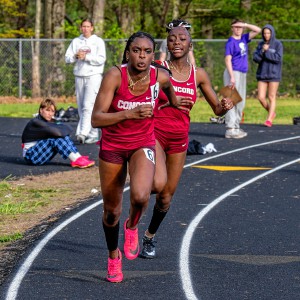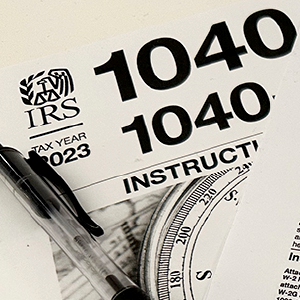Happy Cows Don’t Wag Their Tails
| Published: 09-16-2023 9:00 AM |
“Look, he’s happy. He’s wagging his tail,” said a visitor
I watched as Titan, a 200-pound Belted Galloway steer, swished his tail. Titan had arrived at my farm with five other Belted Galloway calves a week earlier. These calves had just been taken from their moms and were not happy. Farm helper Diane and I herded the two female calves, Sadie and Claudette, into the squeeze chute, where they leaped and bounced in violent protest. Standing outside the chute, we were safe from their antics, and with Diane’s help, we put a halter on each, attached name tags, and weighed them with a weight tape (a tape I wrap around the calf’s body to estimate its weight.) Then, the training began.
As each calf left the squeeze chute, I attached the end of their lead rope to a solid bar in the holding pen. Then I got out of the way.
Sadie ran forward until the tether snapped taught, then she charged the other way. Claudette reared up, flopped on her side, jumped back to her feet, and bounced two feet into the air. I stood aside and watched, ready to release the ropes if they got tangled.
As the two girls did battle with their lead ropes, Diane and I got halters on the boys, Titan, Saturn, and Jerome, and then tied them up as well. The boys did the same thrashing and leaping, but after 10 minutes, two realized that the rope would win every time and that fighting was pointless and exhausting.
One thing about cattle is that they are lazy and would rather quit than fight. All except Titan. Just a few days after that first session, the others accepted the control of the halter. They let us walk up to them, take their temperatures, and brush them. Titan wouldn’t. He’d leap or pull when a human approached and never stopped fighting when we tried to lead him.
That was when the visitor noticed Titan “wagging” his tail.
Often, we think a dog who is wagging its tail is happy. But that’s just one of a dog’s tail-wagging feelings – anxiety and aggression are others. I’ve seen a video of a pitbull who wagged his tail vigorously just before attacking another dog. Cattle are easier to read; they only swish their tails when irritated. It’s like they are saying, “Keep doing what you’re doing, and I’ll kick you!”
Article continues after...
Yesterday's Most Read Articles
 Neighboring landowner objection stalls Steeplegate redevelopment approval
Neighboring landowner objection stalls Steeplegate redevelopment approval
 How has Hopkinton, one of the smallest public schools in New Hampshire, become such a lacrosse powerhouse?
How has Hopkinton, one of the smallest public schools in New Hampshire, become such a lacrosse powerhouse?
 Northeast Coffee Festival comes to Concord this weekend
Northeast Coffee Festival comes to Concord this weekend
 Rock ’N Race draws 3,250 participants, still has further to go to meet fundraising goal
Rock ’N Race draws 3,250 participants, still has further to go to meet fundraising goal
 Steeplegate project to reopen to public comment as developer seeks to reduce required parking
Steeplegate project to reopen to public comment as developer seeks to reduce required parking
 High schools: Concord girls’ 4x100-meter relay sets school record at Merrimack Invite, plus more track, baseball, lax and tennis results
High schools: Concord girls’ 4x100-meter relay sets school record at Merrimack Invite, plus more track, baseball, lax and tennis results
Weeks of training and two summer camp sessions have tamed Titan. He’s harder to catch than the others, but he no longer wags his tail.
Tail wagging is part of cow communication. Here are a few tips on people/cattle communication:
Humans shouldn’t push; they should tap. A quick touch will redirect the cow’s energy. Push, and she’ll push back. Have a conversation, not a battle of force.
When training, be patient. Wait for the correct response. When the cow finally steps forward, release the lead rope as a reward. The cow won’t learn the right answer if you keep asking and never reward.
Licking and brushing – Cows lick each other as a sign of affection and often expect the other cow to lick them back. When a human brushes a cow, the cow regards that as the people version of licking.
Sound confusing? If you want to learn cow-communication, the best teacher is a cow. But until you have your bovine, I’m happy to be your interpreter.
Carole is co-owner of Miles Smith Farm (www.milessmithfarm.com) at Loudon, N.H., where she raises beef and shares the joys of her Farm with kids and adults. She can be reached at carole@soulecoaching.com.
]]>


 Adam Montgomery sentenced to minimum 56 years on murder charges in young daughter’s death
Adam Montgomery sentenced to minimum 56 years on murder charges in young daughter’s death Following budget cut, Pembroke revisits future of elementary school re-build
Following budget cut, Pembroke revisits future of elementary school re-build Granite Geek: Free government software for taxes – what could go wrong? (Not much, as it turns out)
Granite Geek: Free government software for taxes – what could go wrong? (Not much, as it turns out)
